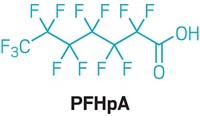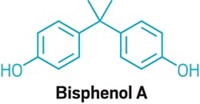Advertisement
Grab your lab coat. Let's get started
Welcome!
Welcome!
Create an account below to get 6 C&EN articles per month, receive newsletters and more - all free.
It seems this is your first time logging in online. Please enter the following information to continue.
As an ACS member you automatically get access to this site. All we need is few more details to create your reading experience.
Not you? Sign in with a different account.
Not you? Sign in with a different account.
ERROR 1
ERROR 1
ERROR 2
ERROR 2
ERROR 2
ERROR 2
ERROR 2
Password and Confirm password must match.
If you have an ACS member number, please enter it here so we can link this account to your membership. (optional)
ERROR 2
ACS values your privacy. By submitting your information, you are gaining access to C&EN and subscribing to our weekly newsletter. We use the information you provide to make your reading experience better, and we will never sell your data to third party members.
Policy
Flame Retardant May Be Banned
by Cheryl Hogue
October 24, 2011
| A version of this story appeared in
Volume 89, Issue 43
The flame retardant hexabromocyclododecane (HBCD), used primarily in polystyrene products, is a step closer to regulation under a global treaty. In mid-October, scientific advisers to the Stockholm Convention on Persistent Organic Pollutants recommended that HBCD be restricted or banned under the accord, which the U.S. has never ratified. Treaty partners will consider—and are likely to act on—that recommendation when they meet in 2013. The European Union banned production of HBCD earlier this year, and the U.S. EPA is encouraging the development of safer alternatives to this chemical (C&EN, Dec. 6, 2010, page 32). Meanwhile, the treaty’s science advisers are initiating a detailed examination of the persistent compounds chlorinated naphthalenes and hexachlorobutadiene for possible regulation under the Stockholm Convention. Chlorinated naphthalenes were used as wood preservatives, additives in paints and engine oils, and in capacitors. Hexachlorobutadiene was once used as a pesticide and as an industrial solvent and is sometimes a by-product in the production of other chlorinated solvents.





Join the conversation
Contact the reporter
Submit a Letter to the Editor for publication
Engage with us on Twitter